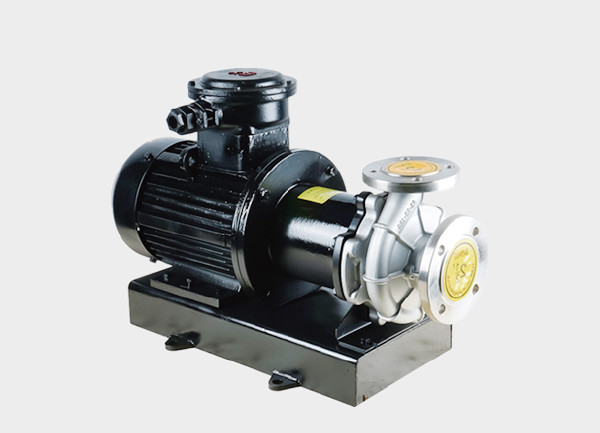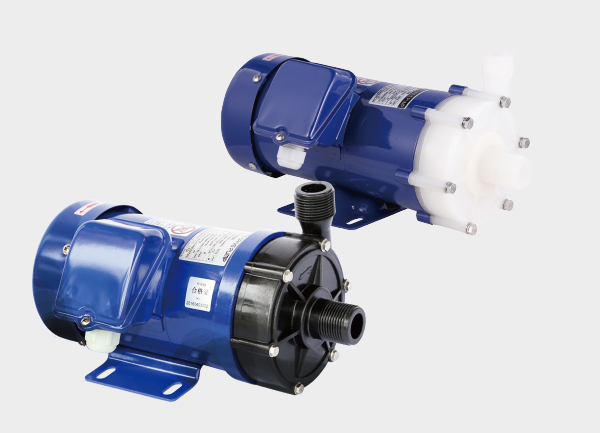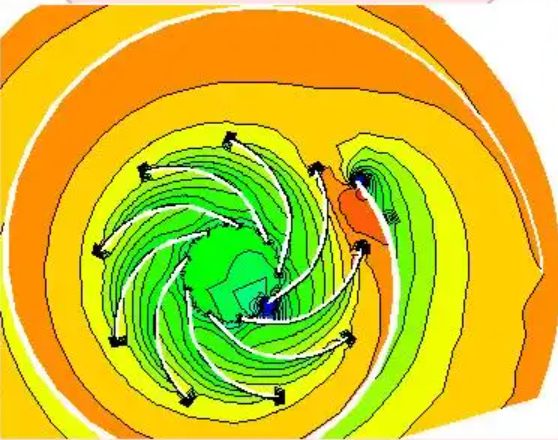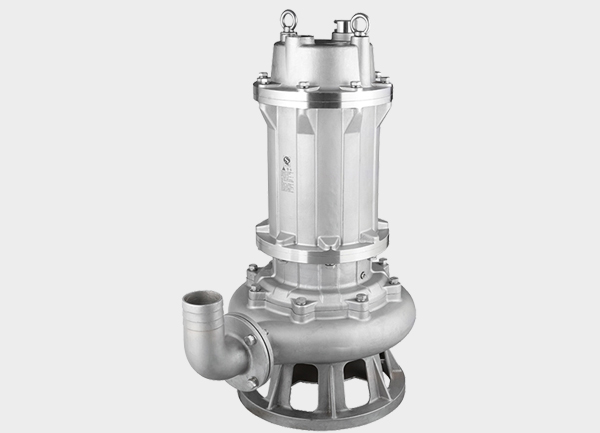Leak-free chemical pumps eliminate dynamic sealing points through advanced structural designs, completely preventing media leakage. They are widely used in industries such as chemical processing, pharmaceuticals, and petrochemicals, where operational safety and environmental protection are paramount. Below are the main types of leak-free chemical pumps and their technical characteristics.
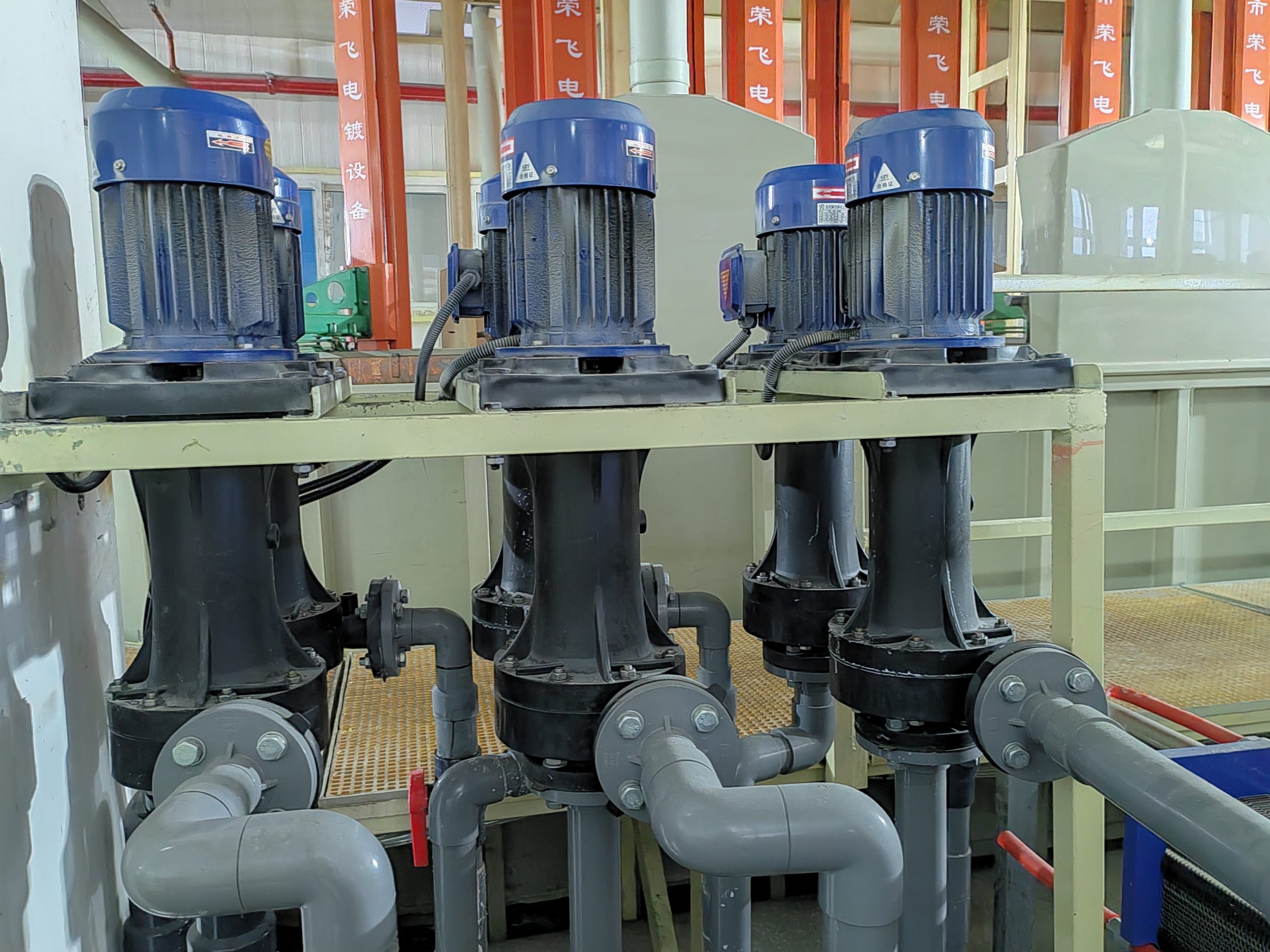
1. Magnetic Drive Pump
Operating Principle:
Power is transmitted through magnetic coupling between the outer and inner magnetic rotors. The containment shell completely isolates the pumped medium from the external environment, forming a static seal design.
Structural Features:
Uses high-energy rare-earth magnets (NdFeB or SmCo) with excellent magnetic strength and demagnetization resistance, maintaining synchronous transmission even with 5–10 mm isolation sleeves.
The containment shell may be metallic (Hastelloy, titanium) or non-metallic (PTFE, ceramic). Metal shells require cooling channels to reduce eddy-current heating, while non-metallic types avoid this issue.
Sliding bearings are typically made of silicon carbide, offering outstanding wear and corrosion resistance with a lifespan exceeding three years.
Applications:
Ideal for transferring strong acids and alkalis (e.g., concentrated sulfuric acid, hydrofluoric acid), organic solvents (e.g., methanol, benzene), and valuable fluids (e.g., precious metal solutions).
Complies with API 685 standards for chemical process pumps, featuring double containment and intelligent monitoring systems.
Limitations:
Cannot run dry—temperatures can exceed 200 °C within a minute, causing demagnetization.
Not suitable for high-viscosity fluids (viscosity > 100 cP) due to potential magnetic decoupling.
2. Canned Motor Pump
Operating Principle:
The pump and motor are integrated into a single sealed unit. The stator and rotor are isolated by thin shielding sleeves, while the process fluid lubricates the bearings and cools the motor directly.
Structural Features:
The impeller and rotor share a single shaft, eliminating couplings, vibration, and noise.
The shielding sleeve is made of non-magnetic thin-walled stainless steel (≤ 1 mm) to ensure efficient magnetic transmission.
Includes an internal circulation system that channels part of the pumped liquid through the motor cavity for self-cooling.
Applications:
Safe transfer of hazardous media such as liquid ammonia and chlorine.
High-temperature and high-pressure service (up to 350 °C and 20 MPa).
Limitations:
Maintenance requires full disassembly, leading to higher service costs.
Unsuitable for media containing particles > 50 μm due to bearing wear.
3. Diaphragm Pump
Operating Principle:
A flexible diaphragm reciprocates to displace liquid, fully isolating the process fluid from the driving mechanism.
Types and Features:
Pneumatic Diaphragm Pump:
Air-driven design eliminates spark risk, suitable for flammable or explosive environments (e.g., nitrocellulose solution in paint production).
Strong self-priming capability (up to 5 m), capable of handling viscous or solid-laden media (solid content ≤ 40%).
Flow rate easily adjusted by air valve; discharge pressure up to 6 bar.
Motor-driven cam system for precise dosing, ideal for pharmaceutical and chemical metering applications.
Optional dual-diaphragm design with built-in leakage monitoring.
Applications:
Handling viscous fluids (resins, inks) and shear-sensitive materials (food-grade colloids).
Automated lines requiring frequent start-stop cycles (e.g., paint filling systems).
Limitations:
Diaphragm life depends on chemical compatibility; PTFE diaphragms last about 2,000 hours in strong acids.
Pneumatic models can be noisy (around 80 dB) and less energy efficient.
4. Peristaltic Pump
Operating Principle:
Rotating rollers compress and release an elastic hose, propelling the liquid without direct contact between the medium and pump components.
Structural Features:
No valves or seals—only the hose contacts the fluid, minimizing maintenance (reduces servicing time by ~70% compared to traditional pumps).
Hose materials include PTFE and fluoroelastomers, rated for −40 °C to 200 °C and excellent corrosion resistance.
High metering accuracy (flow deviation ≤ ±1%) and reversible flow capability.
Applications:
Ideal for viscous, abrasive, or particulate-laden media (e.g., sludge, slurry).
Laboratory and fine chemical processes requiring micro-dosing (e.g., polymerization initiator injection).
Limitations:
Hose life decreases with frequency of compression; frequent replacement may be required in continuous operation.
Pressure limit typically ≤ 1 MPa.
5. Lined Pump
Operating Principle:
A metallic casing lined with corrosion-resistant polymers forms a secondary containment. The shaft seal operates under negative pressure to prevent leakage.
Structural Features:
Lining materials include UHMW-PE or PTFE, offering 7–10× the wear resistance of carbon steel.
Back-pull-out design positions the seal in a negative pressure zone, fully preventing leakage.
Modular design for key wear parts (cover, impeller) ensures low-cost maintenance.
Applications:
Corrosive slurries with solids, such as mineral slurry or desulfurization liquids.
Acidic environments up to 100 °C (e.g., sulfuric or hydrochloric acid).
Limitations:
Poor thermal conductivity makes it unsuitable for high-temperature fluids (> 150 °C).
Efficiency decreases significantly with high-viscosity media.
Selection Guidelines
1. Based on Fluid Properties
Corrosive media: Magnetic drive or lined pumps (PTFE/UHMW-PE linings).
Solid-laden fluids: Diaphragm pump (≤ 40% solids) or peristaltic pump (≤ 60% solids).
Viscosity:
High viscosity (> 100 cP): Diaphragm or peristaltic pumps.
Low viscosity: Magnetic drive or canned motor pumps.
2. Based on Operating Conditions
| Parameter | Canned Motor Pump | Magnetic Drive Pump | Diaphragm Pump |
|---|---|---|---|
| Temperature | −200 °C ~ 350 °C | −20 °C ~ 150 °C | −40 °C ~ 200 °C |
| Pressure | ≤ 20 MPa | ≤ 4 MPa | ≤ 1 MPa |
3. Based on Safety Requirements
Toxic media: Magnetic drive (API 685 compliant) or dual-diaphragm pump with leakage detection.
Explosive environments: Pneumatic diaphragm or explosion-proof canned motor pumps.
Maintenance Cost Comparison
Magnetic Drive Pump: Annual maintenance ≈ ⅓ of traditional seal pumps; main replacement part—bearings (life ≈ 3 years).
Canned Motor Pump: High overhaul cost (30–50% of initial price), but lifespan 8–10 years.
Diaphragm Pump: Quarterly diaphragm checks; replacements ≈ 15% of unit cost.
Peristaltic Pump: Low-cost hose replacement (¥500–2000 each), though frequent changes needed under heavy use.
Industry Standards & Certifications
API 685: Design and testing requirements for sealless magnetic drive pumps, including double containment and monitoring systems.
GB/T 25140: Technical standards for sealless pumps (magnetic and canned types).
ATEX Certification: Required for pneumatic diaphragm pumps used in explosive atmospheres.
Conclusion
Selecting a leak-free chemical pump requires balancing chemical compatibility, operating conditions, and economic efficiency. For extreme environments—such as ultra-high temperature, purity, or corrosivity—custom-engineered solutions like all-ceramic magnetic pumps or multistage canned motor pumps are recommended to ensure both safety and reliability.



